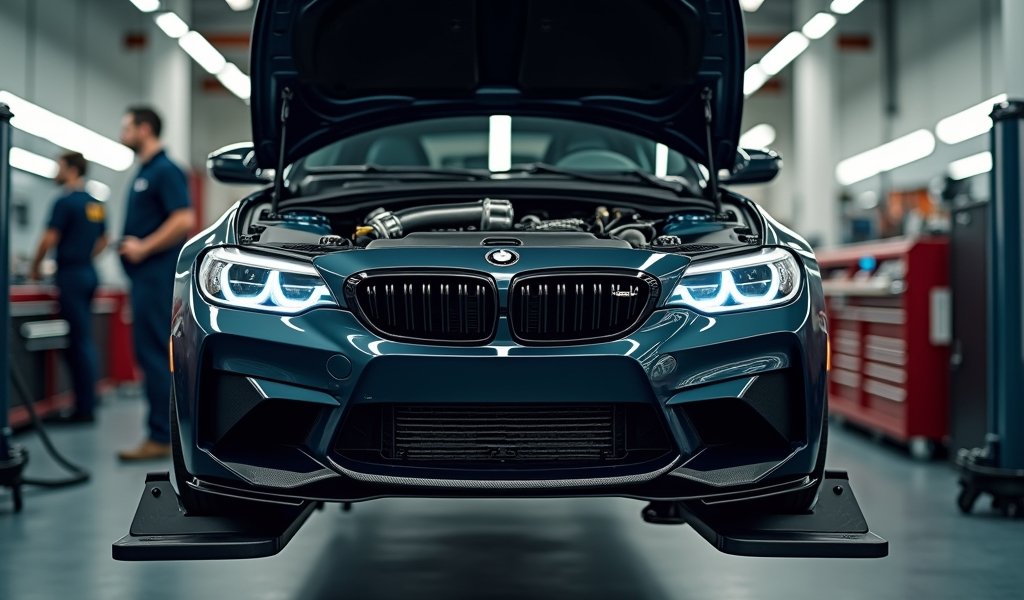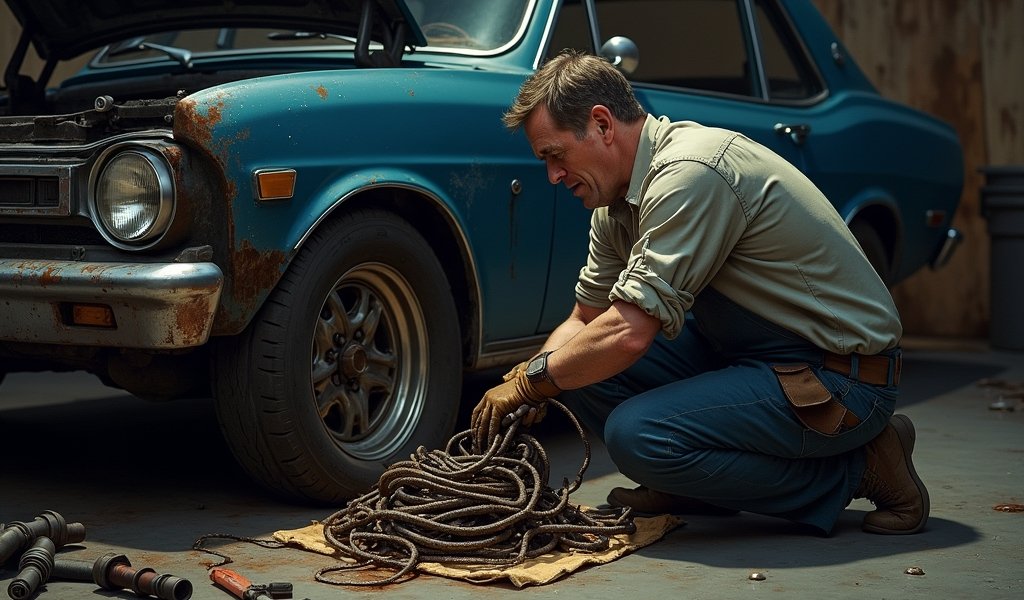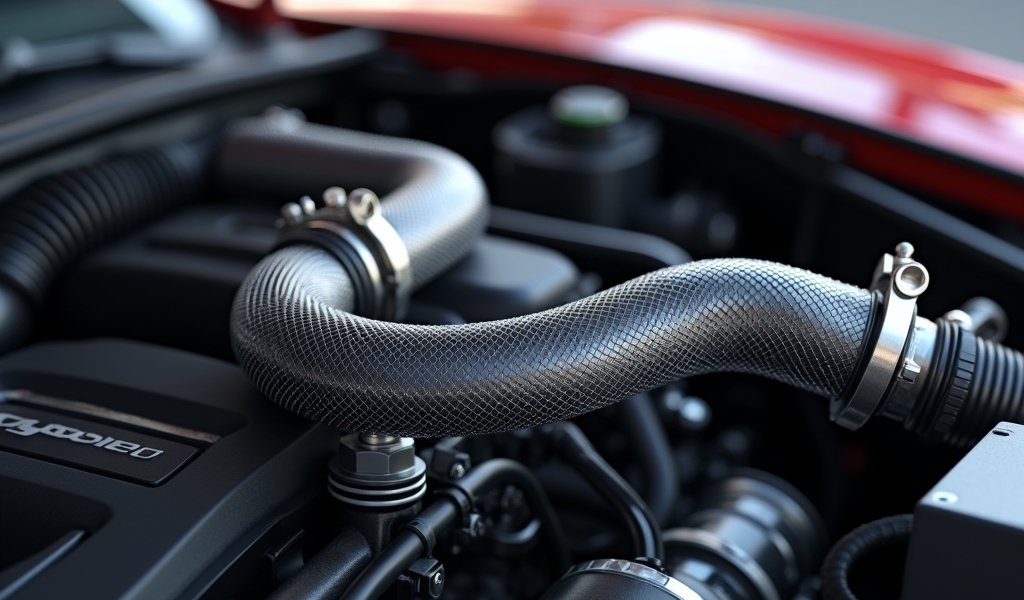Overview
Proper routing of injector return lines is crucial for vehicle performance and safety, requiring attention to heat protection, secure mounting, and optimal flow paths to prevent issues like vapor lock, pressure imbalances, and fuel leaks. Regular inspection, using appropriate materials, and following best practices for installation can prevent common problems, while DIY maintenance is possible for many issues though complex systems may require professional diagnosis.
Table of Contents
- Understanding Injector Return Lines
- Why Proper Routing Matters
- Common Injector Return Line Problems
- Diagnosing Return Line Issues
- Best Practices for Routing
- DIY Fixes for Return Line Problems
- When to Seek Professional Help
- Preventative Maintenance
- Recommended Products
- Conclusion
- Frequently Asked Questions
Understanding Injector Return Lines
Injector return lines are the unsung heroes of your vehicle’s fuel system. These small but crucial components transport unused fuel from the injectors back to the fuel tank, completing an essential circuit in your engine’s fuel delivery system.
Think of your fuel system as a closed loop—fuel travels from the tank to the engine through supply lines, gets processed by the injectors, and any excess returns to the tank through these return lines. This continuous cycle ensures proper fuel pressure, prevents injector overheating, and maintains consistent engine performance.
In most vehicles, return lines are made of specialized rubber or nylon tubing designed to withstand exposure to fuel and engine heat. They’re typically smaller in diameter than the main fuel lines since they’re only handling excess fuel flow rather than the primary supply.
Proper routing of these lines might seem like a minor detail, but it can significantly impact your vehicle’s reliability and performance. When correctly installed, you’ll never think about them. When they’re problematic? They’ll make themselves known in ways that can leave you scratching your head.
Why Proper Routing Matters
Properly routing your injector return lines isn’t just a matter of neatness under the hood—it’s critical for your engine’s health and performance. When return lines are correctly positioned, they ensure consistent fuel pressure across all injectors, resulting in smooth engine operation and optimal fuel economy.
Poor routing, on the other hand, can create a cascade of issues. Return lines positioned too close to hot exhaust components can cause fuel to vaporize inside the line, creating vapor lock that disrupts the entire fuel system. Improperly secured lines might vibrate against other components, eventually wearing through and creating dangerous fuel leaks.
I’ve seen countless vehicles come into the shop with mysterious performance issues that all traced back to poorly routed return lines. One memorable customer complained of an engine that would run perfectly when cold but develop a stubborn misfire after warming up. The culprit? A return line that had been routed directly above an exhaust manifold during a previous repair.
The difference between proper and improper routing often comes down to just a few inches, but those inches can mean the difference between reliable performance and frustrating breakdowns.

Common Injector Return Line Problems
After 20+ years working on fuel systems, I’ve identified several recurring issues that plague injector return lines. Let’s break down the most common culprits:
Heat Exposure
Return lines routed too close to exhaust manifolds, turbochargers, or other hot components can suffer from several heat-related problems:
- Fuel vaporization leading to vapor lock
- Premature hardening and cracking of rubber lines
- Degradation of internal line materials, leading to contamination
Heat damage typically shows up as hardened, brittle lines that may have visible cracks or a glazed appearance. In severe cases, the line might appear melted or deformed.
Kinking and Restriction
Return lines need smooth, gradual bends to maintain proper flow. When lines are kinked or bent too sharply, they can:
- Restrict fuel flow back to the tank
- Create pressure buildup at the injectors
- Lead to inconsistent injection patterns
I once diagnosed a puzzling idle issue on a Ford F-150 that turned out to be caused by a return line that had been pinched during installation. The seemingly minor restriction was enough to throw off the entire fuel pressure regulation system!
Chafing and Physical Damage
Engine vibration can cause unsecured return lines to rub against nearby components, eventually wearing through the line material. This common problem can lead to:
- Fuel leaks (a serious fire hazard)
- Air intrusion into the fuel system
- Complete system failure
Proper routing should always include secure mounting points that prevent lines from making contact with other components, particularly those with sharp edges or those that move during engine operation.
Connection Problems
The points where return lines connect to injectors, rails, or the fuel tank are common failure points:
- Loose connections can allow fuel leakage or air intrusion
- Overtightened clamps can cut into line material
- Incorrect fittings can create restriction or failure points
Using the proper flaring tools and techniques for hard lines, and appropriate clamps for flexible lines, is essential for leak-free connections that will stand the test of time.
Diagnosing Return Line Issues
Identifying return line problems can be tricky because they often masquerade as other issues. Here’s how to tell if your injector return lines might be the source of your vehicle’s woes:
Performance Symptoms
Several performance issues can point to return line problems:
- Engine hesitation or stumbling, especially when warm
- Inconsistent idle quality that changes with temperature
- Loss of power under load or acceleration
- Hard starting after the engine has been running (hot restart issues)
- Check engine light with fuel trim or pressure-related codes
These symptoms typically occur because improper return line function affects the pressure balance across your fuel injectors, leading to inconsistent spray patterns or quantities.
Visual Inspection
A thorough visual check can reveal many return line issues:
- Look for wet spots or fuel staining around line connections
- Check for lines touching or running close to hot components
- Examine lines for chafing marks, cracks, or hardening
- Verify that all mounting clips or brackets are intact and properly positioned
I recommend using a flashlight and mirror to inspect areas that aren’t easily visible from above. Sometimes the most problematic routing issues are hidden underneath components or behind brackets.
Pressure Testing
For more definitive diagnosis, pressure testing the fuel system can reveal return line restrictions:
- Connect a fuel pressure gauge to the test port on the fuel rail
- Check pressure with the engine running and at idle
- Monitor how quickly pressure drops when the engine is shut off
- Observe if pressure builds abnormally high during operation
A healthy system should maintain consistent pressure at idle and show a gradual, controlled drop when the engine is shut off. Abnormal pressure readings often point to return line issues, as research from Motor Magazine confirms.
Best Practices for Routing
Whether you’re replacing existing return lines or setting up a custom fuel system, following these routing best practices will help ensure reliable operation:
Heat Management
- Maintain a minimum 3-inch clearance from exhaust components whenever possible
- Use heat shields or protective sleeves in areas where adequate clearance isn’t possible
- Route lines below hot components rather than above them (heat rises!)
- Consider the engine bay’s airflow patterns to take advantage of natural cooling
Remember that heat damage is cumulative—even if a line isn’t hot enough to fail immediately, repeated heating cycles will accelerate aging and eventual failure.
Securing Lines Properly
- Mount lines at least every 12 inches to prevent vibration and movement
- Use rubber-lined clamps designed specifically for fuel lines
- Ensure mounting points are on stable, non-moving components
- Leave just enough slack to accommodate engine movement
I prefer using OEM-style plastic retaining clips whenever possible. They provide secure mounting without risk of overtightening and damaging the line.
Optimizing Flow Path
- Avoid sharp bends—aim for gradual curves with at least a 2-inch radius
- Make the return path as direct as possible without compromising clearance
- Keep crossings of other lines or hoses at 90-degree angles to prevent chafing
- Ensure the entire return path follows a downward slope toward the tank when possible
When designing a return path, think like water—the path of least resistance with consistent downward flow is ideal. This helps prevent vapor lock and ensures reliable fuel return even under varying operating conditions.

DIY Fixes for Return Line Problems
Many return line issues can be addressed without a trip to the mechanic. Here are some effective DIY solutions for common problems:
Simple Rerouting
Sometimes, a minor adjustment is all that’s needed:
- Loosen mounting points and gently reposition the line away from heat sources or chafing points
- Add cushioned line clamps at strategic points to create a better path
- Use zip ties with cushioned mounts as temporary fixes until proper clamps can be installed
Take before and after photos so you can compare the routing and ensure you’ve actually improved the situation.
Line Replacement
For damaged sections:
- Purchase automotive fuel line of the correct diameter (typically 5/16″ or 3/8″ for return lines)
- Cut out the damaged section using a proper tubing cutter (not scissors or wire cutters)
- Install the new section using appropriate fuel-rated hose clamps
- Consider upgrading to EFI-rated fuel line for better heat and chemical resistance
Always use line specifically rated for fuel systems—never substitute general-purpose hose or tubing that can degrade when exposed to gasoline or diesel.
Heat Protection
For lines that must pass near heat sources:
- Install reflective heat sleeve material over the line
- Add heat shields between the line and the heat source
- Use high-temperature routing grommets when passing through hot areas
Products like DEI’s Fire Sleeve or Thermo-Tec’s Heat Sleeve can protect lines from temperatures up to 1000°F, though ideally, you should reroute rather than rely solely on heat protection.
Connection Upgrades
Improve reliability at connection points:
- Replace standard hose clamps with fuel-specific spring clamps or Oetiker clamps
- Add a small amount of fuel-resistant thread sealant to threaded connections
- Upgrade to AN fittings for more secure, leak-proof connections
Connection points are often the weakest links in the return line system. Upgrading these components provides significant reliability improvements for minimal cost.
When to Seek Professional Help
While many return line issues can be addressed DIY-style, some situations warrant professional attention:
Complex Fuel Systems
Modern vehicles with returnless fuel systems or complex electronic pressure regulation can be challenging to diagnose and repair correctly. If your vehicle has:
- Multiple fuel pressure regulators
- Integrated pump/sender/regulator assemblies
- Computer-controlled pressure regulation
Consider consulting a professional who has the diagnostic equipment to properly evaluate the entire system.
Persistent Problems
If you’ve attempted DIY fixes but problems persist, a professional can:
- Perform comprehensive fuel system pressure testing
- Use specialized tools to access hard-to-reach components
- Identify subtle issues that might be overlooked in a basic inspection
Sometimes what appears to be a return line routing issue might actually be a symptom of a failing pump or regulator—professionals have the experience to distinguish between similar symptoms.
Safety Concerns
Fuel system work carries inherent risks. Consider professional help if:
- You don’t have proper tools to safely disconnect fuel lines under pressure
- You’re experiencing active fuel leaks that pose fire hazards
- The return system integrates with high-pressure components
Fuel system safety isn’t something to gamble with—the National Highway Traffic Safety Administration reports that hundreds of vehicle fires occur annually due to improperly maintained fuel systems.
Preventative Maintenance
An ounce of prevention is worth a gallon of cure when it comes to fuel system maintenance. Here’s how to keep your return lines in top shape:
Regular Inspection
Make these checks part of your routine maintenance:
- Visually inspect return lines every oil change
- Check for signs of leaks, especially after washing the engine bay
- Look for color changes in the line material (often indicates heat exposure)
- Verify that mounting points remain secure
Early detection of potential issues can save you from roadside headaches down the line.
Scheduled Replacement
Even with perfect routing, fuel lines have a finite lifespan:
- Consider preventative replacement of rubber return lines every 5-7 years
- Replace lines immediately if they show any signs of hardening or cracking
- Upgrade to higher-quality materials during scheduled replacements
The cost of preventative line replacement is minimal compared to the potential damage from a failed line.
System Cleaning
Maintaining a clean fuel system helps prevent return line issues:
- Use quality fuel from reputable stations
- Add a fuel system cleaner every 10,000 miles
- Replace fuel filters according to manufacturer recommendations
Clean fuel reduces the chance of contaminants building up in return lines and regulators.
Recommended Products
Based on years of experience with various fuel systems, here are my top product recommendations for return line work:
Line Materials
- Gates Barricade Fuel Line: Outstanding chemical and heat resistance
- Earl’s Vapor Guard: Premium option for high-performance applications
- Russell ProClassic II: Excellent for custom installations with its braided cover
For most daily drivers, the Gates line offers the best balance of quality and cost, while performance enthusiasts should consider the Earl’s or Russell products.
Connection Hardware
- Oetiker clamps: More secure than traditional worm clamps and won’t cut into line material
- Gates PowerGrip clamps: Excellent for critical connections
- Earl’s Ano-Tuff fittings: For those upgrading to AN-style connections
Connection quality matters just as much as line quality—don’t compromise here.
Heat Protection
- DEI Fire Sleeve: Protects lines from temperatures up to 1000°F
- Thermo-Tec Heat Shield: Perfect for creating barriers between lines and heat sources
- Heatshield Products Lava Wrap: Premium option for extreme heat environments
These products allow safe routing in areas where ideal clearance isn’t possible due to space constraints.
Tools
- CTA Tools Fuel Line Disconnect Set: Makes connection work much easier
- KNIPEX Pipe Cutter: Creates clean, square cuts without deforming line material
- Fuel Pressure Test Kit: Essential for diagnosing system issues
The right tools not only make the job easier but also ensure better results and fewer complications.
Conclusion
Proper injector return line routing may seem like a small detail in the grand scheme of vehicle maintenance, but it plays an outsized role in your fuel system’s reliability and performance. The difference between a carefully routed return system and a haphazard one can mean the difference between trouble-free driving and mysterious performance issues that leave you stranded.
By understanding the common problems, implementing best practices, and performing regular inspections, you can ensure your fuel system operates at peak efficiency. Remember that prevention is always easier and less expensive than fixing problems after they’ve developed.
Whether you’re maintaining a factory system or setting up custom fuel delivery for a performance build, taking the time to properly route and secure your return lines is an investment that pays dividends in reliability and peace of mind. Your engine will run smoother, your fuel economy will benefit, and you’ll avoid the headaches that come with fuel system failures.
Next time you’re under the hood, take a moment to trace your return lines and verify they’re properly routed and in good condition—your engine will thank you for it!
Frequently Asked Questions
What happens if fuel return lines are clogged?
Clogged return lines cause increased fuel pressure at the injectors, leading to rich running conditions and potential flooding. This can result in poor performance, reduced fuel economy, and even engine damage if left uncorrected.
Can I use regular rubber hose for fuel return lines?
Never use non-fuel-rated hose for any part of your fuel system. Regular rubber hose will degrade quickly when exposed to fuel, leading to leaks and potential fire hazards.
How often should fuel return lines be replaced?
Rubber fuel return lines should typically be inspected yearly and replaced every 5-7 years as preventative maintenance. If you notice any cracking, hardening, or softening of the line material, replace them immediately regardless of age.
What’s the difference between fuel supply and return lines?
Supply lines carry pressurized fuel from the tank to the engine and are typically larger in diameter. Return lines carry excess fuel back to the tank at lower pressure and are usually smaller in diameter.
Can improper return line routing cause engine overheating?
While not directly causing overheating, poor routing can lead to vapor lock and fuel delivery issues that make an engine run lean. Lean conditions can increase combustion temperatures and contribute to overheating problems.

